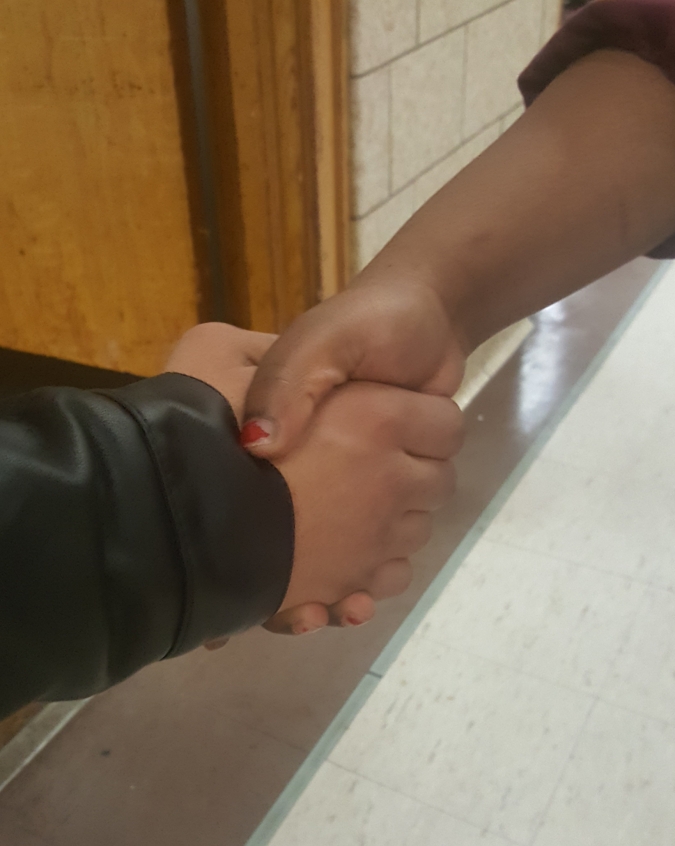 I once visited a principal who greeted his students as they walked in the front door of his school. He told me, “I solve 90% of my school’s discipline problems by standing here, greeting each student. I notice who’s smiling and who seems to be upset, and I stop them, talk to them, see if I can intervene and catch the problem before they walk into their classes.”
I once visited a principal who greeted his students as they walked in the front door of his school. He told me, “I solve 90% of my school’s discipline problems by standing here, greeting each student. I notice who’s smiling and who seems to be upset, and I stop them, talk to them, see if I can intervene and catch the problem before they walk into their classes.”
I never forgot this statement.
Entering my school building is a potentially stressful experience for kids. Our school shares a large building with five other schools and we have a high level of security. Students swipe their ID cards into a computer and if they have a cell phone, they hand it to a staff member who keeps it secure throughout the day. Then, students put their bags through a scanner like the ones at the airport, and walk through a metal detector, which is manned by several safety agents in uniform. If the metal detector beeps as the student walks through, a security agent takes the student to the side and wands them.
Does this assure most of us that our building is physically safe? Yes. Is the experience of entering the school warm and welcoming? No—and that’s why greeting the students is so crucial.
I have staff members who greet students right after they walk through the metal detector. Their greetings vary, and most depend on the child: they might call the students’ name and say “hi,” shake their hands or give a fist bump, or even a hug. Sometimes the greeting is just a smile and eye contact that says, “I see you, you’re here, and I’m glad you’re here.” With just that simple acknowledgement, the students’ faces transform and relax into a smile.
Sometimes when I’m greeting students, I pull them aside and pay them a compliment about something I saw them do well the day before, or something I want to remind them of: “I love that you’ve made so many good friends, but I’m concerned you’re coming late to class when you talk a lot in the hallway. If you get to your classes at the very beginning you’ll be showing leadership and you’ll get the whole lesson.” The morning is a great time to talk to kids about issues like this: instead of being upset or arguing, the students are receptive and usually commit to changing the behavior.
We have optional tutoring on Saturdays to give students extra preparation. My assistant principal Yan Wang greeted students as they walked into the building this past Saturday– a wet, rainy day. She told me, “I noticed how much of a difference greeting students with a smile helped start their day, even though many of them arrived frowning and upset with wet clothes and wet shoes. Even students who sometimes have defiant behaviors became cooperative. I saw how when I treat a student during each moment as if it’s new, I’m providing them an opportunity to start over and transform.”
Of course, there are so many interactions that happen after students are greeted at that front door, and there’s more to solving all discipline problems than just greeting students. Teachers being able to greet each student as they enter the class is crucially important. Once the student is in the classroom, each moment in each class could potentially lead to learning, or to a conflict.
However, greeting students in the first moment of their day, in a series of many moments, is key. Yan reminded me of what a difference it makes to be greeted, acknowledged, and welcomed—how easy it is for us to do, and what a difference it makes.
Photo credit: Julie Nariman

I so appreciate your blog and hope every educator reads this! You provide a low tech solution to a citywide challenge! Thank you!
LikeLiked by 1 person
Thank you Jodi! Yes, it is truly low-tech–just being present for kids.
LikeLike